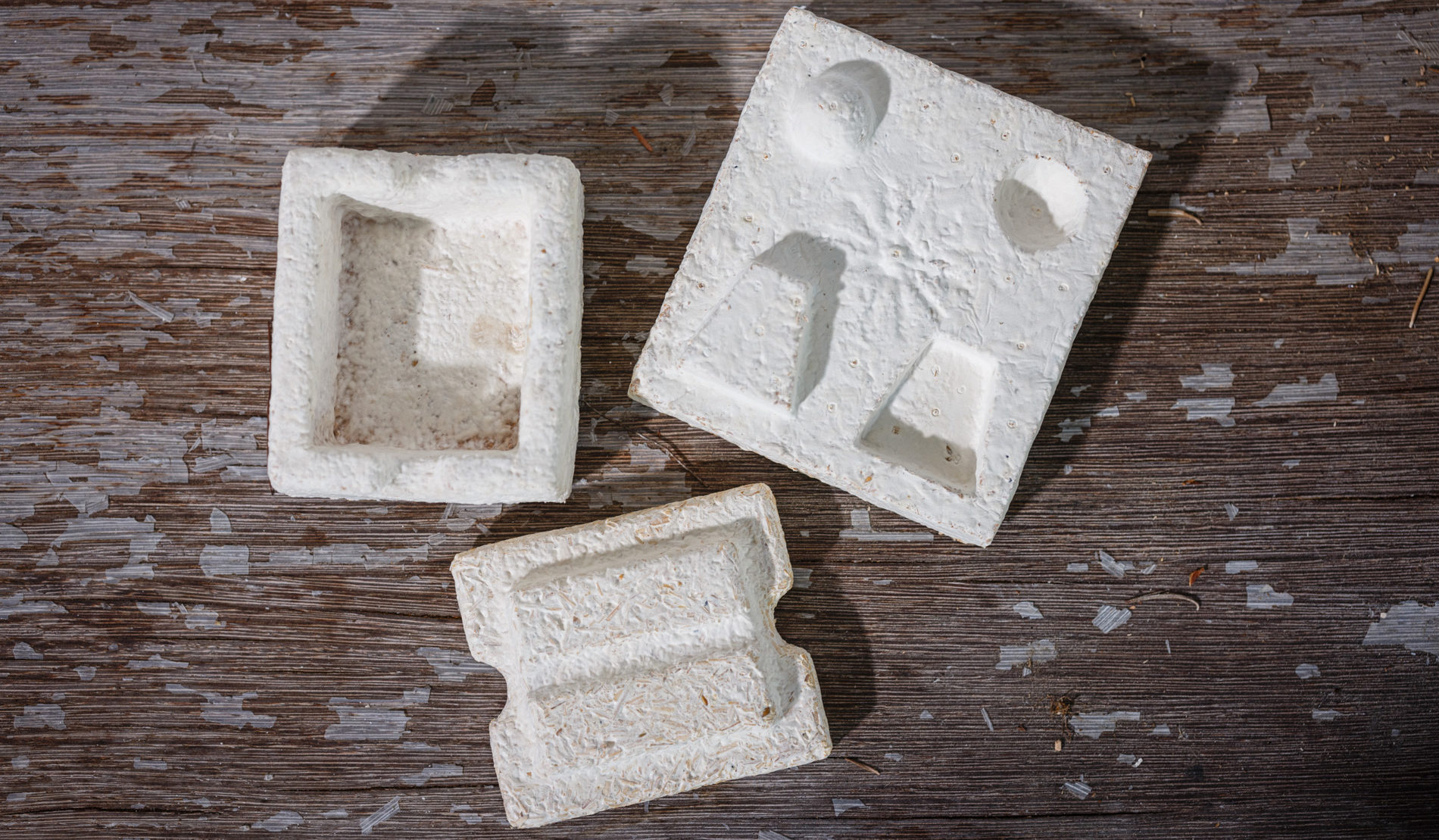21.03.2024
Appenzell | Switzerland
Mycelium: a Magic Bullet
Revolutionizing Materials with Mushroom Mesh.
A rounded top, a stout stem – that’s what mushrooms look like to most people. Yet porcini, champignons and shiitakes are primarily composed of mycelium. The root-like filaments are spread underground in the form of a web composed of fine, white threads and can grow to an enormous size. The Hallimasch mycelium is estimated to be 2400 years old and covers an area of 9 km².
Mycelium is not only an underestimated natural wonder, but also an emerging opportunity for the industry of materials. From furniture, thermal insulation and soundproofing to circular pharmaceutical packaging and fertilizers for remineralization, the uses of mycelium as a raw material are many. Mycrobez has been developing an innovative process technology for the production of so-called mycelium composites since 2019.

Goodbye Styrofoam. Hello mycelium!
Mycelium in combination with various biological debris is used to produce a multifunctional material. It is lightweight, insulates, and is fire- and water-repellent, giving the Mycrobez material the same advantages as Styrofoam, for example. There is one aspect that makes the Mycrobez material vastly superior to its competitors: it takes only one month to decompose without leaving any residue in the environment.
“Mycelium materials promote biodiversity once they are disposed of.”
Compared to the petroleum-based competition, mycelium-based products are costly and only available in smaller quantities. Mycrobz’s innovative process solves exactly this problem. Mycelium will be suitable for the mass market and enable a complete circular economy model: “We want to support a material revolution across industries that will drive single-use plastic packaging out of the market.”

